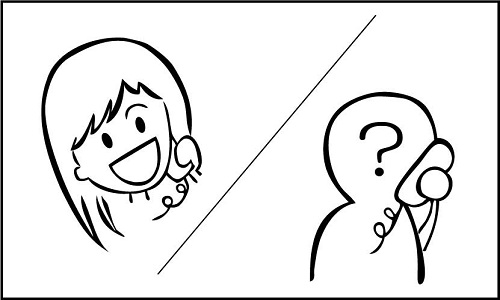Common mistakes in Learning Kanji and Solutions

Common mistakes in learning Kanji and solutions. You have tried different ways to learn Kanji, yet still feel uncomfortable with memorizing and using it. Today’s article will discuss the common mistakes in learning Kanji and solutions to each one. We hope to help diagnose what prevents you from excelling in learning Kanji, and you may find the solutions to your problems quite simple but surprisingly effective.
Contents
1. Stroke by Stroke instead of Radical Combination:
You may wonder how Japanese people memorize the shape, position and order of each stroke within a 15-stroke character, let alone more than 2000 commonly-used characters . “What others can, I can”, you think. Then you write and rewrite headlong, trying to memorize each single stroke of a single character. Now if you plan to learn 1000 words, you have to multiply your memorizing 1000 times. Impossible, right?
You will be astonished how successful learners gain a great deal of characters: they don’t memorize the strokes. What they do memorize are the radicals.
A radical is a combo of strokes which describes a thing or expresses an idea. A character expresses an idea, thus is made up of radicals, which already have their own meaning, instead of meaningless strokes. A lot of characters are radicals themselves. Therefore, a character should be memorized based on the radicals that make it up.
For example, this character道 is the Kanji of “Do”. Everything in Japan seems to be systemized and developed into a Do – “way”, as in Chado (tea way), Kendo (sword way), Judo (soft way), to name a few. Now, 道 is made up of two radicals: 辶 and 首. 辶 means walk, move, and 首 means head or lead. So when people move in a specific (led) direction, a Do (a way or road) is made.
Solution:
First of all, you may want to have a glance at, and if possible, learn the Kang Xi radical system.
Secondly, next time when you see a Kanji, analyze the radicals that make it up, imagine how the radicals appear and how they interact in accordance with the meaning of the character, and you will find learning Kanji easier and more interesting.
Be careful: You may not guess the meaning of a character based on its radicals: in some cases, a character contains an unrelated-to-meaning radical that only serves to indicate its Chinese pronunciation, which has slipped away (and left the radical meaningless) ever since the word was adapted to Japanese. Radicals help you memorize Kanji, not guess the meaning or pronunciation of the characters.
2. Race like a hare:
In the Aesop fable ‘Hare and Tortoise’, the hare runs fast but wanders, while the tortoise is slow but persistent. In the end, the tortoise wins the race.
You excitedly gorge up like 60 Kanji characters in one day (maybe for a test), only to put your feet up the following days. After a year of such sporadic learning, you find most of the characters you have learned on the ‘moody’ days have faded away.
This phenomenon is called the “Hare and Tortoise effect”. Taking up too fast and too much without proper repetition and practice means the characters slip away at the same pace you learn them.
Solution:
1. Set up your timeline:
A specific, visible plan always helps.
Ask yourself:
– How many characters do you plan to learn in a specific course of time?
– Then, how many characters you must learn every day to achieve your goal?
If you need to acquire 1500 characters in two months, make 1500⁄60= 25. Then you commit yourself to complete the everyday task of 25 words. Be disciplined (like the tortoise), but if you are busier in some days, shift a portion to the other days. Just make sure you observe the deal and pay the dept.
2. Use what you learn:
To use is to imagine, to visualize, to recognize or to write. Do anything that carves the characters into your mind. Make repetitions to consolidate the connections to the characters within your brain.
* Extra tips:
Discipline is necessary in learning Kanji, but it needs fueling with excitement. Here are some tips to make your learning an enjoyable experience:
– Watch cartoons, anime, clips, music videos that have Japanese Kanji subtitles. Choose funny or meaningful contents (not action movies, you don’t want to waste your time on stunning fight scenes). Make sure you actively listen and read the lines, and pause to write down strange characters.
– Set the language of your cell phone and Google, Facebook or Twitter account to Japanese. Immerse yourself into a Kanji jungle where you must look up, understand and memorize the characters to survive.
Now that you are aware of the common mistakes in learning Kanji and solutions, we hope you will have fun learning Kanji and achieve your goal. Explore How to learn Japanese for more helpful information.


